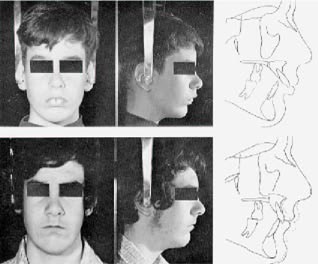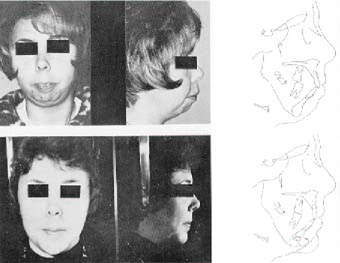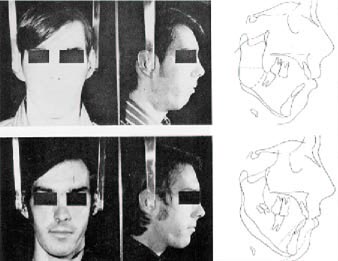Hormones Gone Wild
Technical advancements continue to improve the orthodontist's professional life and, if the recent past is any indication, will keep doing so in the near future. That's all for the good, because I don't hanker for the good old days when I pinched every band, torqued and detorqued every edgewise archwire, and had to hold the appliance together with nothing more than zinc phosphate cement and a prayer.
But no matter how much improvement we make in the delivery of orthodontic services, there is one limiting feature of orthodontics that seems to confound some of these splendid technological leaps. That is patient cooperation.
There is certainly little enough to make us feel euphoric about controlling this absolutely critical part of therapy. Most of what we know about patient motivation is subjective or, at best, anecdotal. Peter Drucker has said, "We know absolutely nothing about motivation. All we can do is write books about it." But we ought not to dismiss the observations and impressions that knowledgeable and learned colleagues take from their patients.
Fred Schudy, who retired recently after 50 years of practice, has had the opportunity to treat many families into the second and third generations. He tells me there is no doubt that this current generation of youngsters is much less cooperative than the parents were. Is this simply due to a more relaxed, liberal social climate? To a lessening of collective responsibility? Or perhaps to a generalized national carelessness? All of these could contribute to reduced patient cooperation, but I really doubt that our youth today is suffering from a collective decline in character. There has certainly been enough media attention to allow one to draw that conclusion. The more I study history, though, the less plausible such an explanation seems. Today's adolescents don't appear more inclined to misbehavior, malfeasance, or misanthropy than previous generations have been. Still, Fred Schudy doesn't blow smoke; when he says something, it's worth pondering.
Certainly adolescents are different from other patients. The preface to a new book, Craniofacial Growth During Adolescence (Center for Human Growth and Development, University of Michigan), calls this the time of life when "the hormones run wild". That is literally true. And although everyone understands that these hormones alter growth and cause emotional changes, it is usually overlooked that the same hormones may also explain the lack of cooperation from adolescents.
Sheldon Baumrind writes in the concluding chapter of Craniofacial Growth During Adolescence that children are now entering adolescence earlier than before. No one seems to know precisely why. It may be due to better nutrition or environmental factors, but it is happening on a worldwide scale. To my knowledge Baumrind is the first person to address the clinical implications of this earlier maturity. He concludes that it is giving us a population that enters this troublesome period sooner and stays in it longer. That is, I think, one of the important reasons why Schudy and others notice less cooperation from this generation. We may be dealing not with genetically or socially imposed character defects, but rather with hormonal surges and, quite possibly, physiological deficits.
I don't know of anyone who has studied (or at least published) what these deficits might be. But it wouldn't be surprising to find lower endorphin levels in adolescents. We know that drugs such as nicotine, marijuana, and cocaine diminish the output of these valuable, natural pain relievers and mood modifiers; perhaps adolescent hormones also reduce endorphin output.
Obviously much of this is speculative, but I feel that ultimately patient cooperation will be understood as a function of pain tolerance. Unfortunately, controlling pain in orthodontic patients is not an exact science, and there doesn't seem to be much professional interest in the subject--otherwise we would see more research. But in my practice, at least, the best patients are those with high pain tolerance and the worst are those who tolerate very little discomfort.
Right now our tools for allaying pain are fairly crude and imprecise. TENS units have some promise; non-steroidal anti-inflammatory agents such as aspirin and ibuprofen give some relief; and certainly our choice of brackets, wires, and forces can affect pain perception. But until someone discovers more precise physiological reasons for the resentful, rebellious, and unpredictable behavior of adolescents, this is our armamentarium.
Minimizing inflammation is critical to the control of pain because inflammation lowers pain tolerance by making tissues hyperalgesic. These supersensitive tissues then become responsive to stimuli that wouldn't ordinarily evoke any reaction.
It is easy to see and understand this well-known principle when the inflamed tissue is gingiva and we note patients reluctant to brush their teeth and gums because of gingival hypersensitivity. The principle is no less real when the inflammation occurs in an invisible periodontal membrane or bone.
Reducing inflammation and increasing pain tolerance are not mutually exclusive physiological phenomena. Their symbiosis leads me to believe that the most reasonable key to greater pain tolerance, and thus better patient behavior, is to minimize inflammation of oral tissues.
Trying to reduce patient discomfort is the main reason we now resort to bands when occlusal forces make it impossible to keep a bonded tube or bracket on. We have also found segmented arches to be less painful than full arches. Patients have told me Class II elastics from a fully bonded lower arch to upper posterior sectional arches are much less painful than elastics to a complete upper archwire. This is probably because fewer nociceptive fibers are stimulated, since there is less maxillary anchorage to overcome. Incidentally, the Class II correction occurs faster, too.
Another strategy that has helped my patients is to start them with a Class II elastic of such light force that they hardly feel it. That force is doubled in a few days and then gradually increased until it is effective, but tolerable. Behaviorists call this gradual technique "shaping", and it seems to work by encouraging people to take small, successful steps instead of large, uncertain ones. You do use more elastics, but the technique has resulted in better patient compliance.
Unless we can significantly lessen patient discomfort, it is probably unrealistic to expect very much cooperation. Animals have been known to chew off limbs caught in painful traps, so it shouldn't surprise us when human adolescents display enough ingenuity to spring our metal traps and rescue their teeth from what to them is intolerable pain.
I think we and our patients would greatly benefit from some intensive and thorough studies about how to increase pain tolerance and how to minimize the orthodontic forces we use. This journal doesn't receive much submitted material on these subjects, and others don't either, judging from their published output. A new orthodontic revolution could be launched by such discoveries, which would also make orthodontic therapy more appealing and beneficial to a wider audience.





